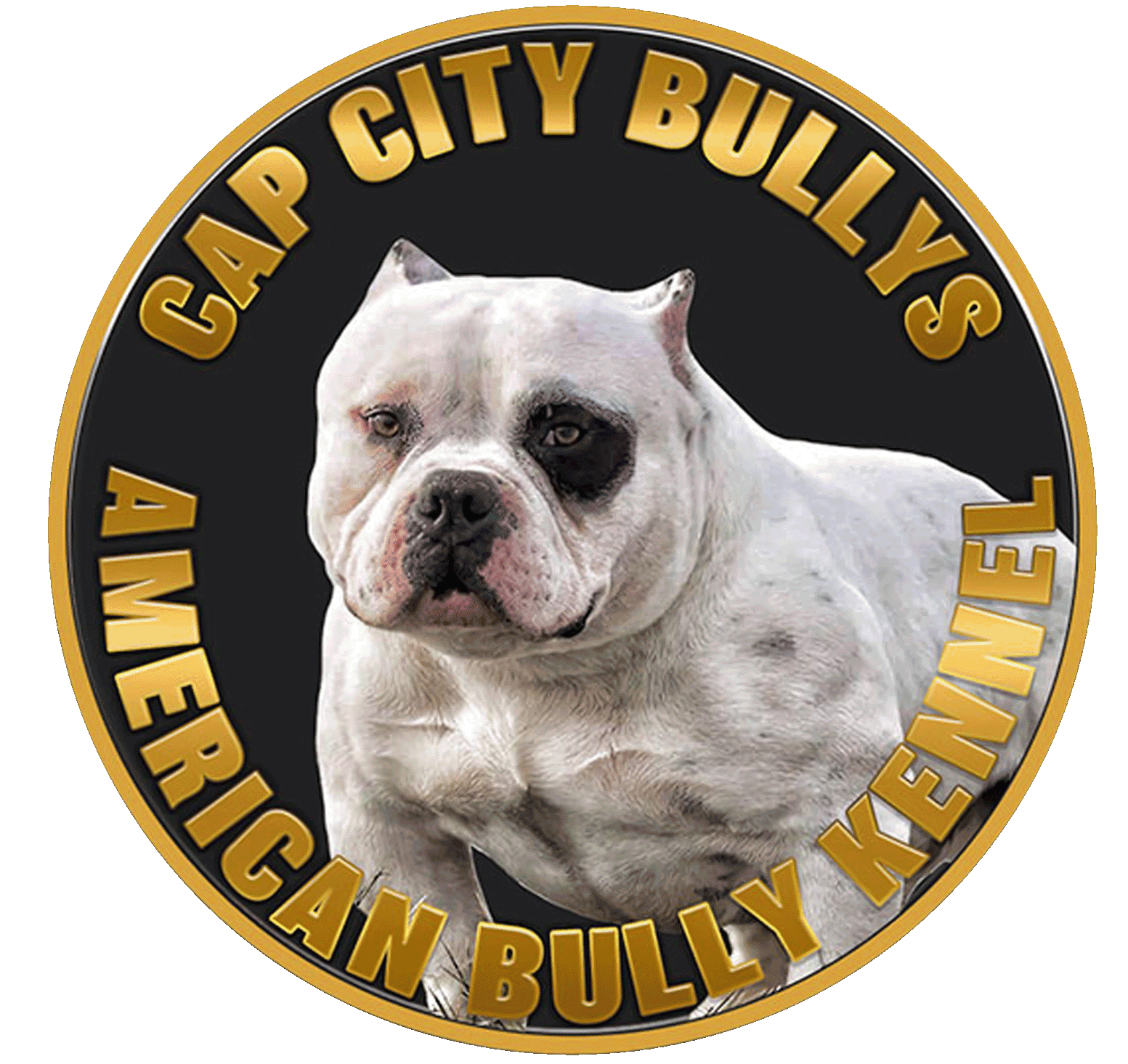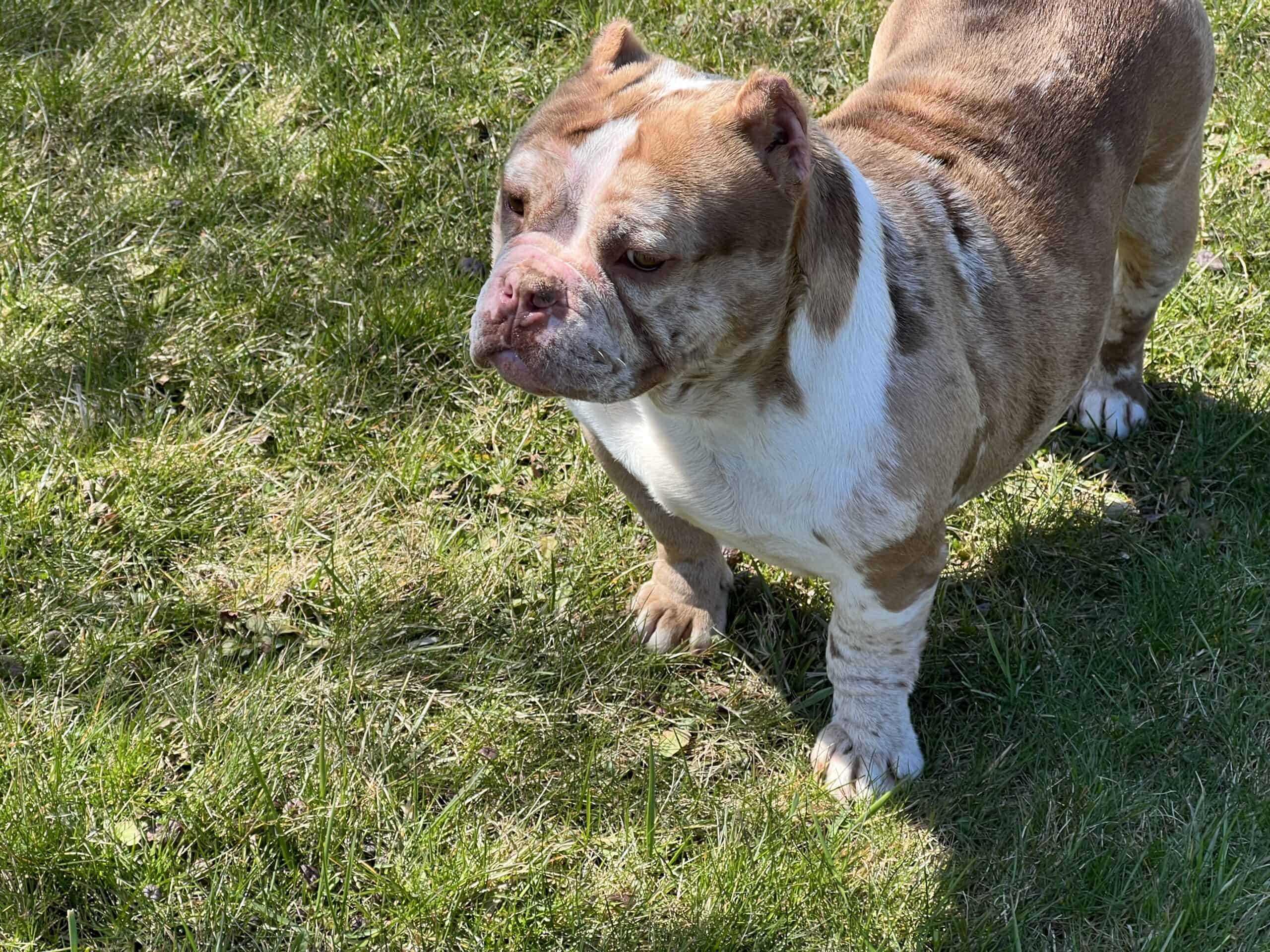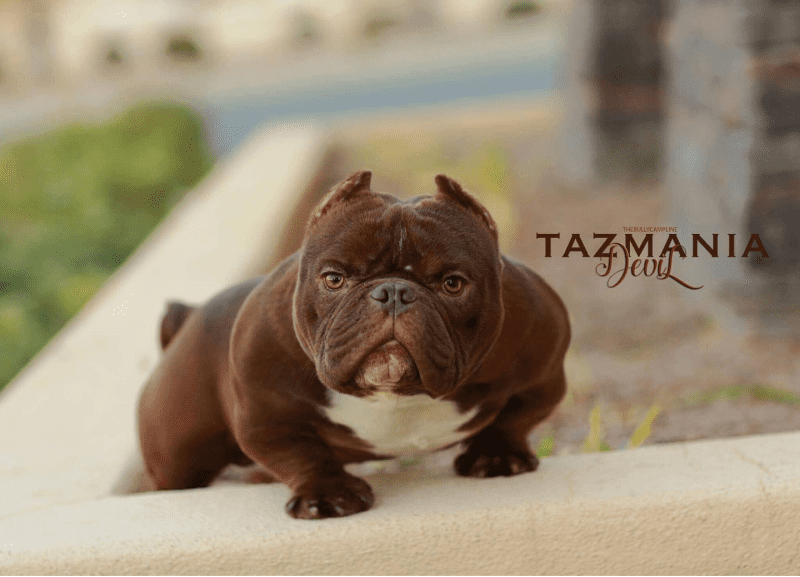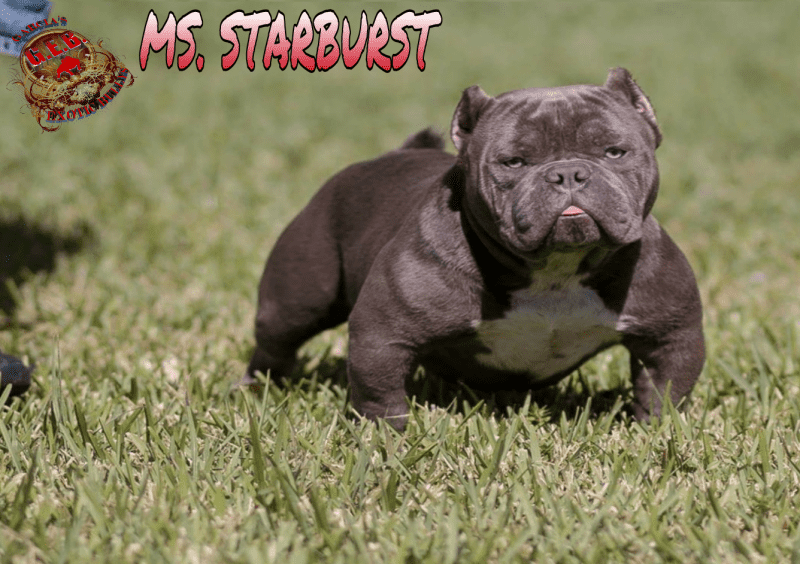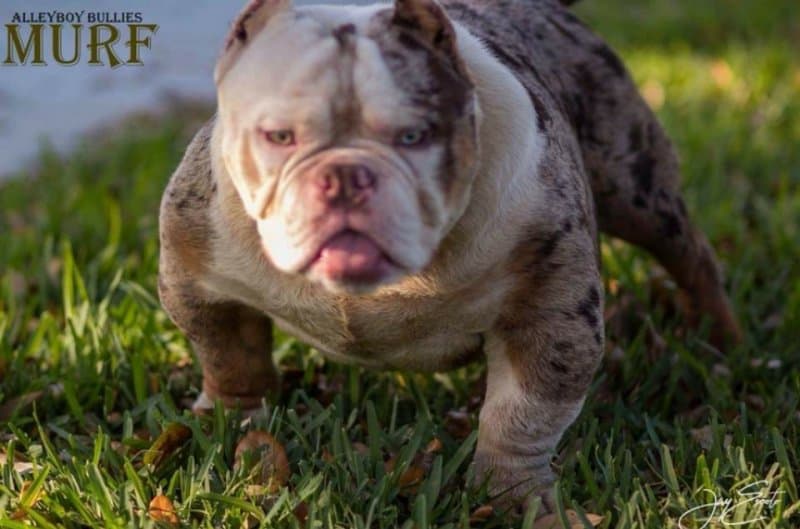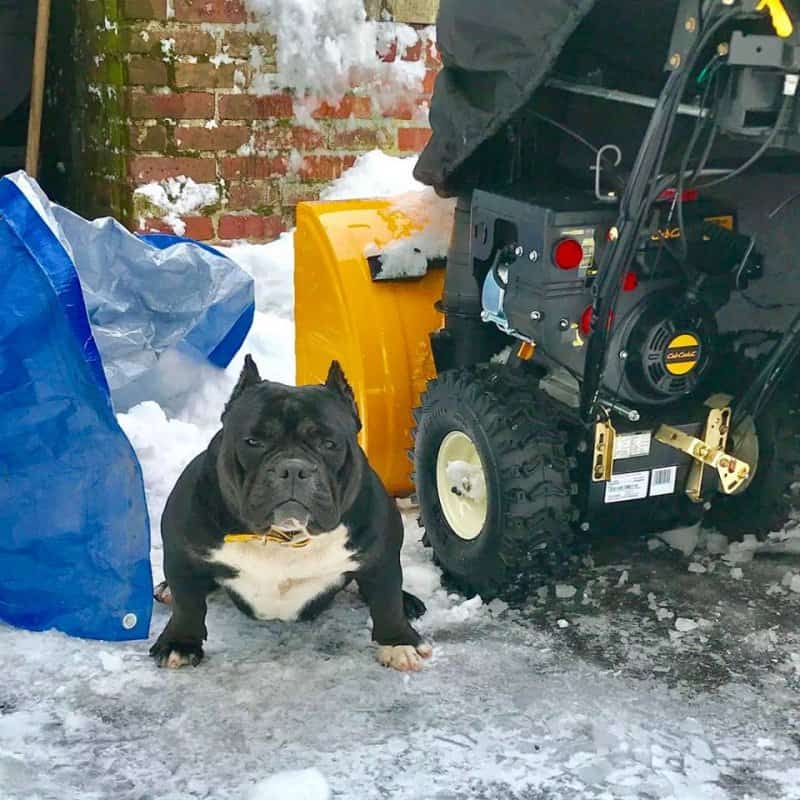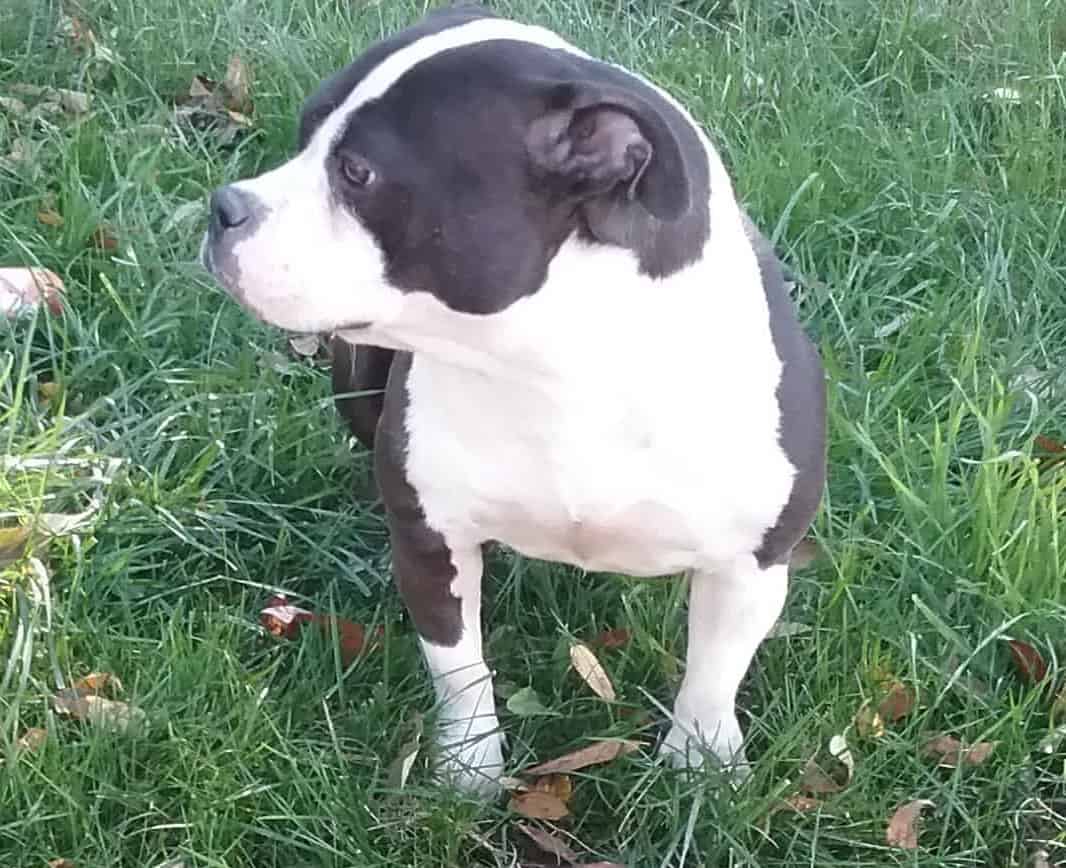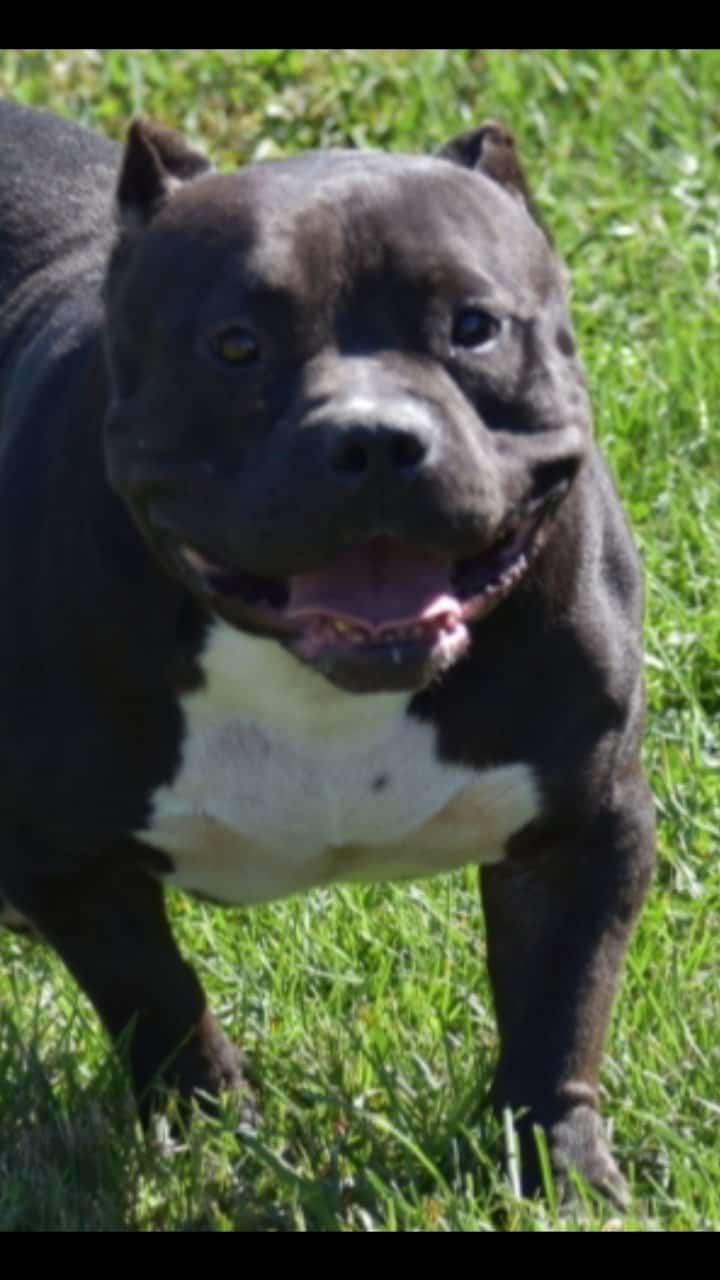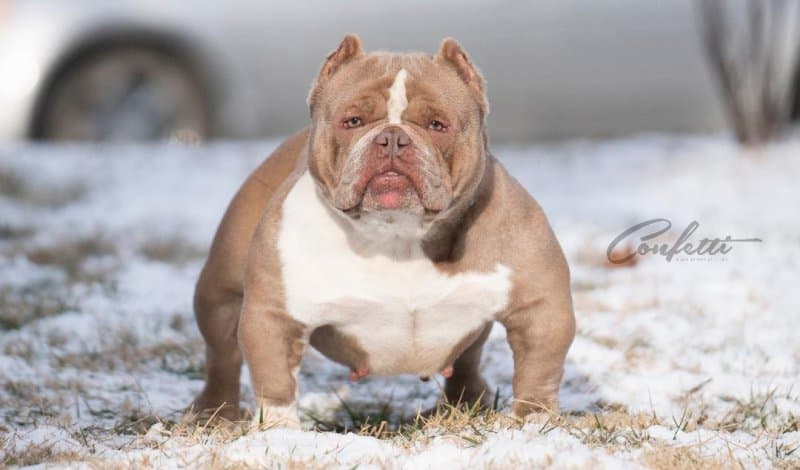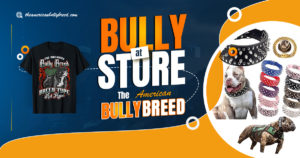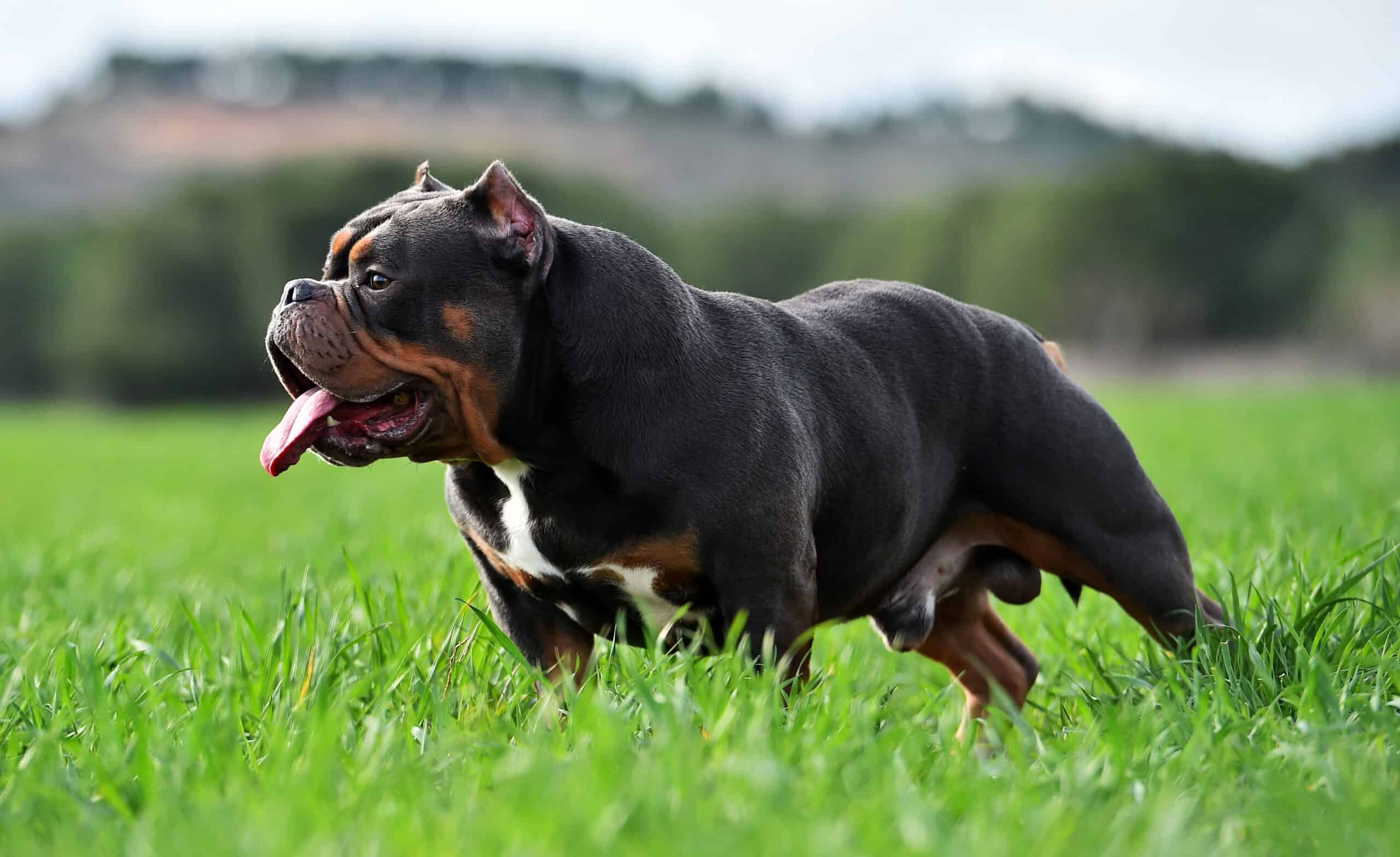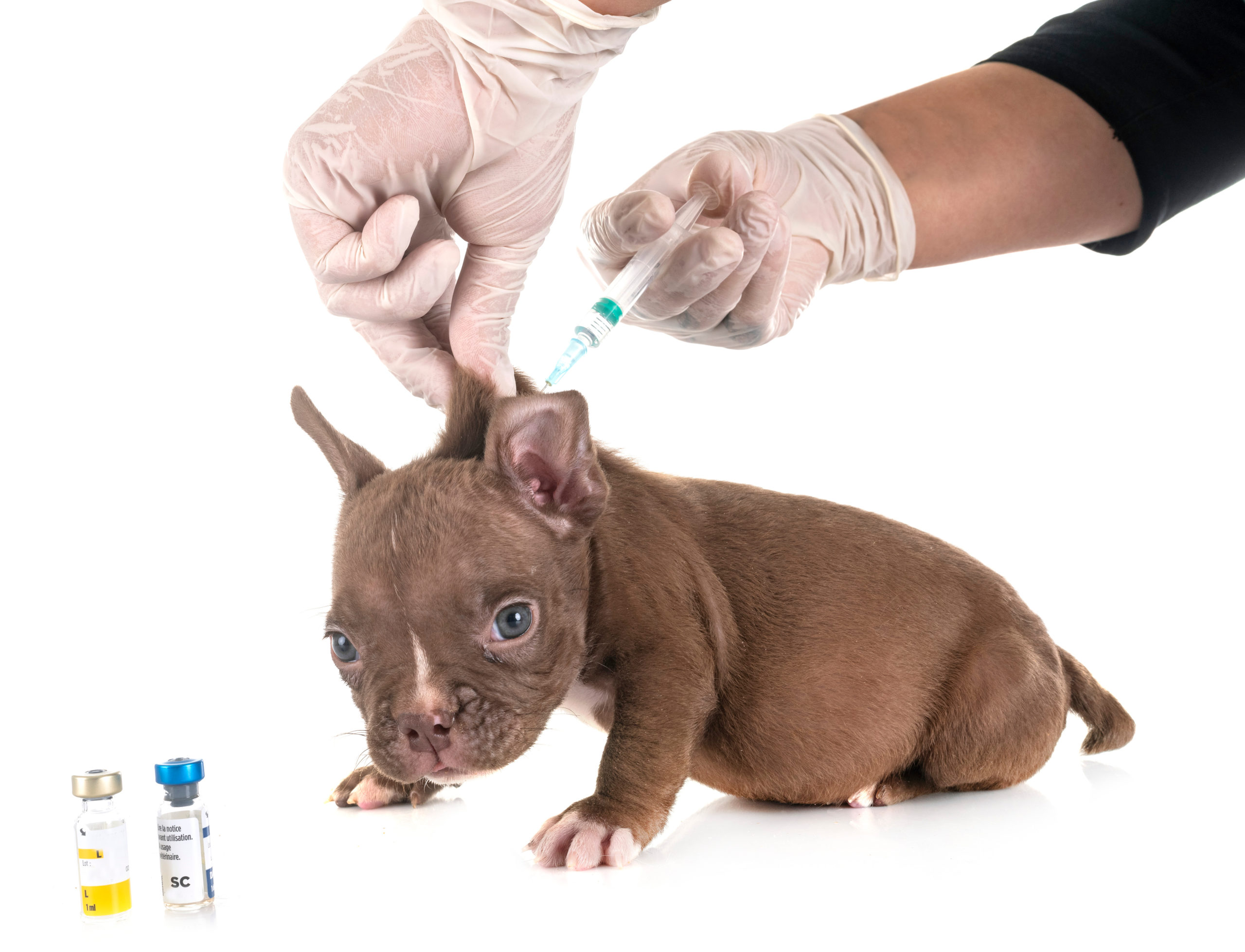 CapCity Bullys
CapCity Bullys
SAHARA
Sahara athich 12 inch Micro female. Giagi bloodline on top and Devilspit bloodline on bottom
SAHARA’s PEDIGREE
BLUE JAY  3100 Exotics | GIAGI 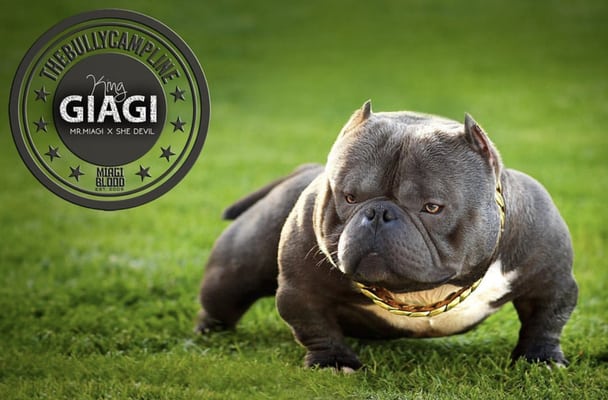 The Bullycampline | Mr. Miagi  The Bullycampline |
SHE DEVIL  The Bullycampline | ||
SKITTLES 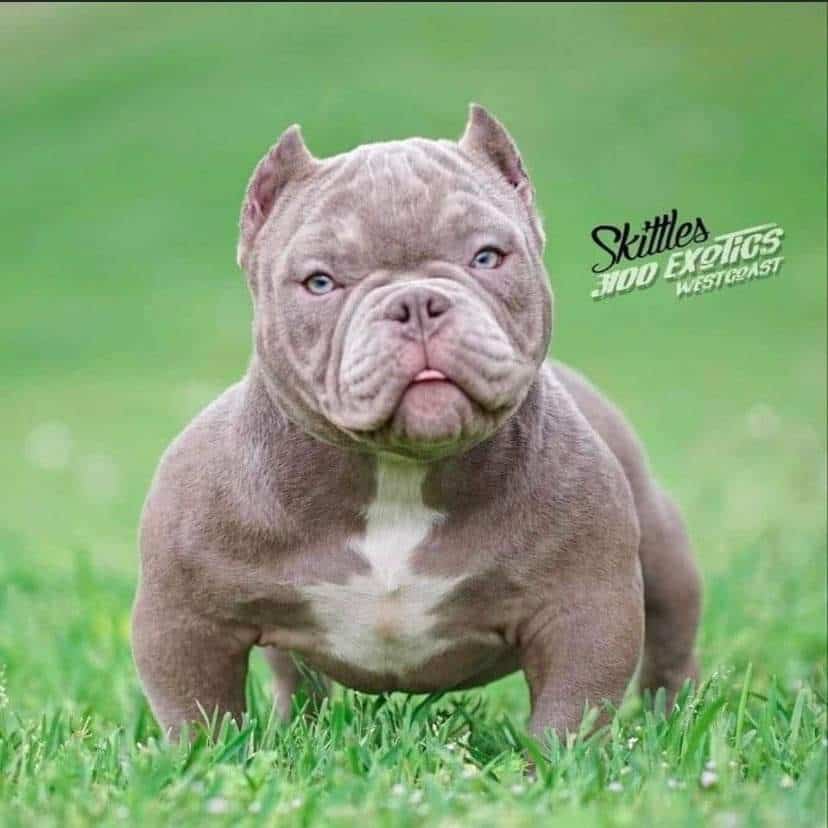 3100 Exotics | NAPOLEON  TLB | |
SHINOBI  Top Of The Line | ||
Goldie 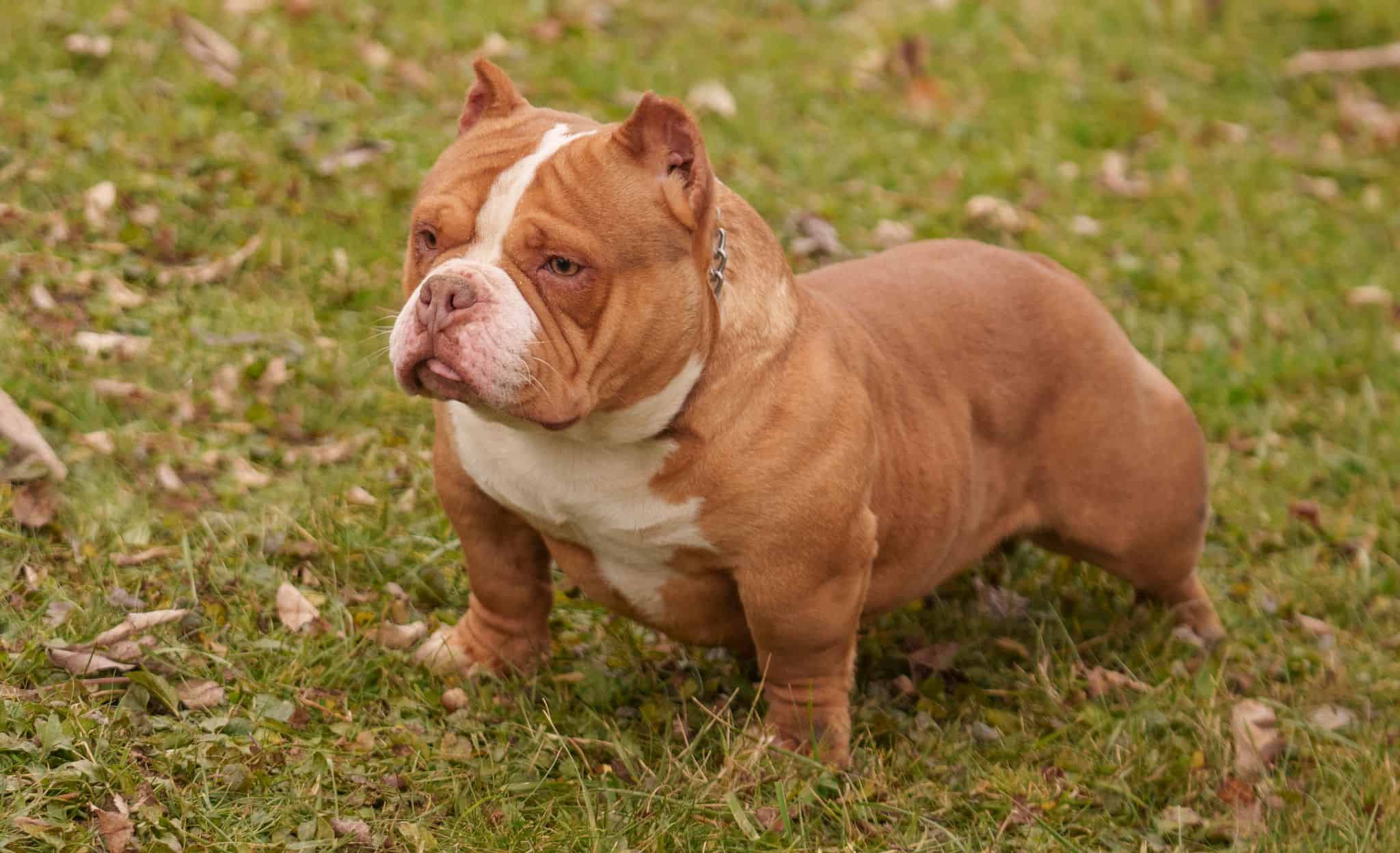 CapCity Bullys | BULLWINKLE 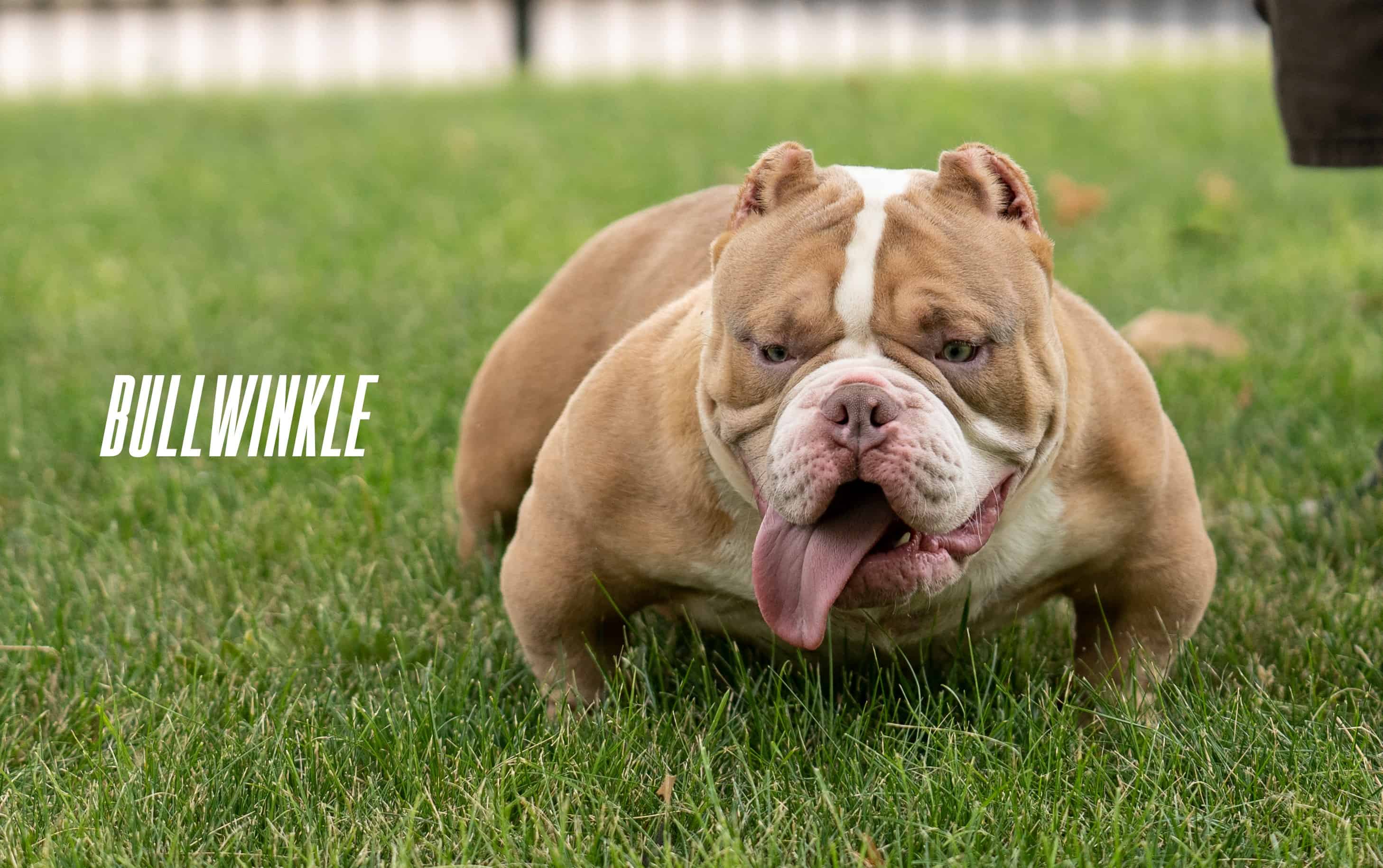 Freakline Bulls | DAREDEVIL  MBK |
MARTINI  EBE | ||
TORNADO  CapCity Bullys | CELL BLOCK  Prodigy Bullycamp | |
BLACK ONYX
Capcity Bullys |
MYSTIQUE
🌟 Unleash Excellence with Mystique: The Ultimate Pocket Bully Package! 🏆
Step into the world of superior breeding with Mystique, a pocket Bully that defines perfection. 🐾 Boasting a massive body, big-boned structure, and an impressive head and neck, Mystique has it all. 🚀 As the son of the renowned K3 and ABKC/ABR registered, Mystique brings a legacy of excellence to your breeding program. 🌈 Elevate your bloodline – secure Mystique’s stud services now! 📞 Call or Text (614) 507-9702 to unlock the potential of Mystique’s impeccable genetics. 🐶🔥
CAPCITY STUD SERVICE
We offer stud service to approved females. We offer in house breeding or semen shipping. All of our Bully’s available for stud, we have a broad selection of the best bloodlines in the nation
For more information: call/text (614) 507-9702
STUD FEE $1,500.00
MYSTIQUE’s PEDIGREE
K3  Blockline Bullys | K2 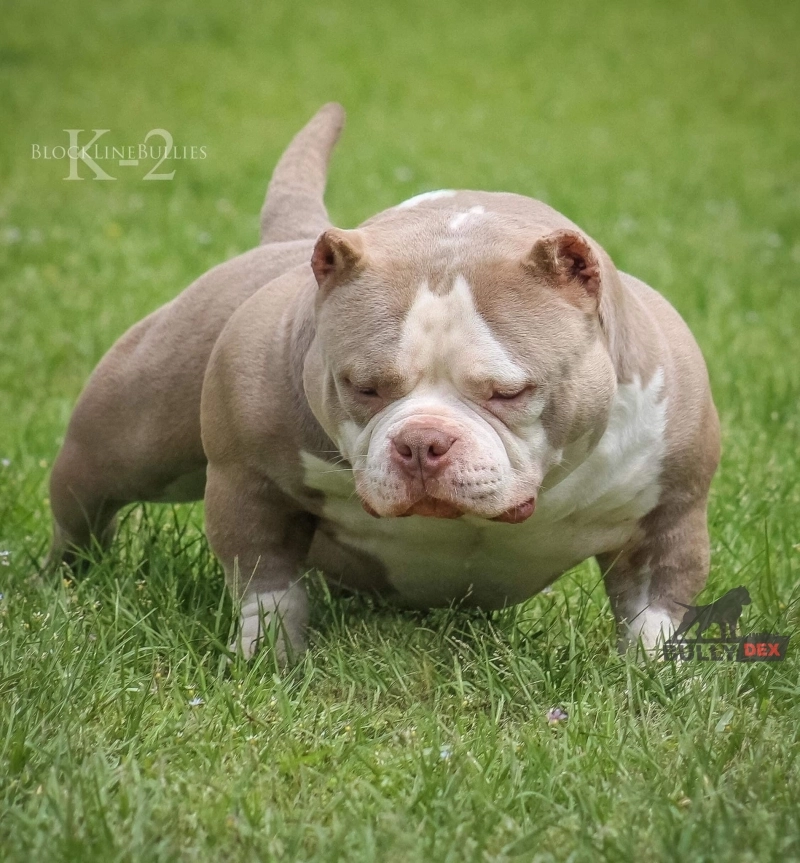 Blockline Bullys | KING LOUIS  Blockline Bullys |
LADY GLITTER SPARKLES  33-OH | ||
DREAMER 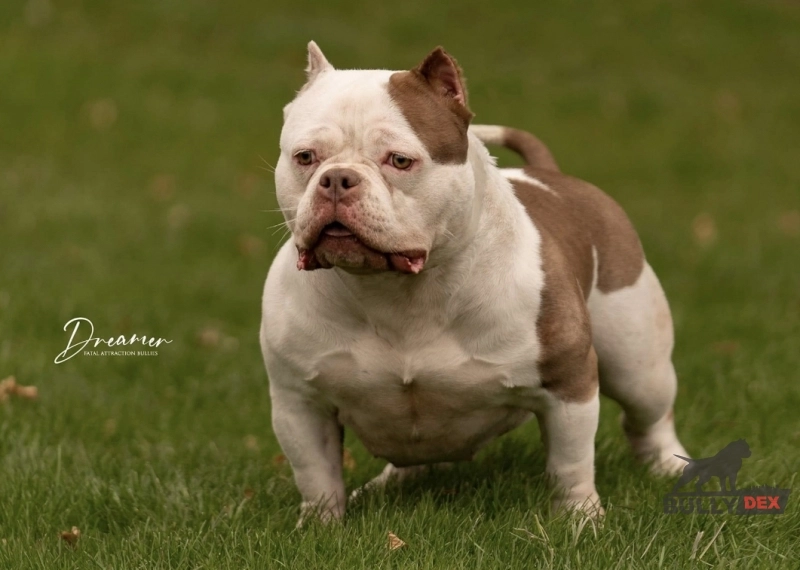 Liberty Bulls | DRAX 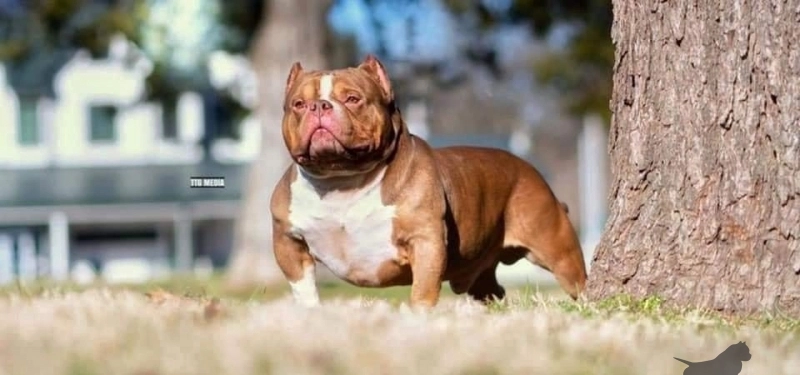 Eminent Bullys | |
LADY LIBERTY 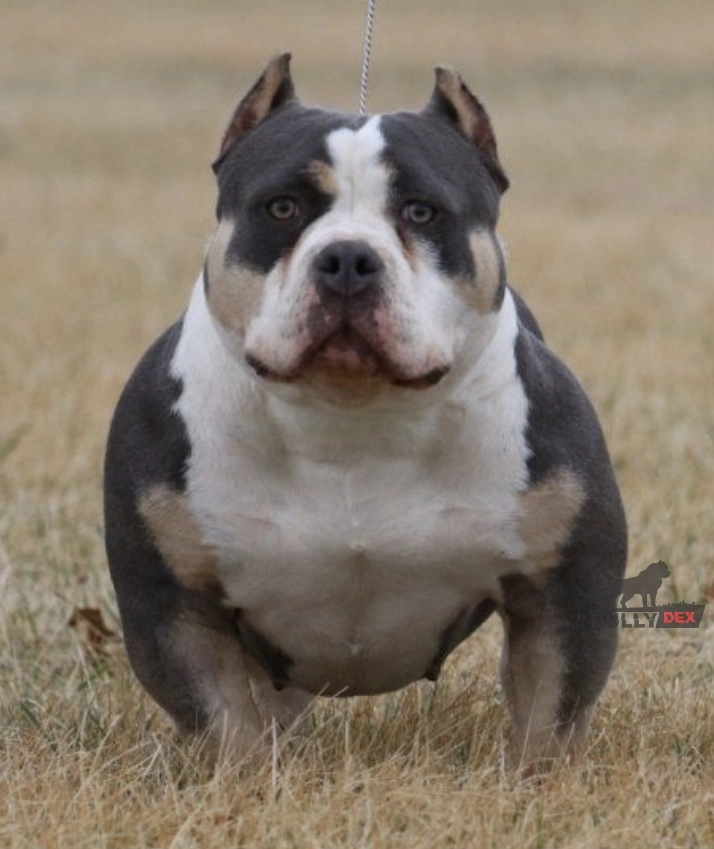 KCBK's | ||
MS. COOKIE 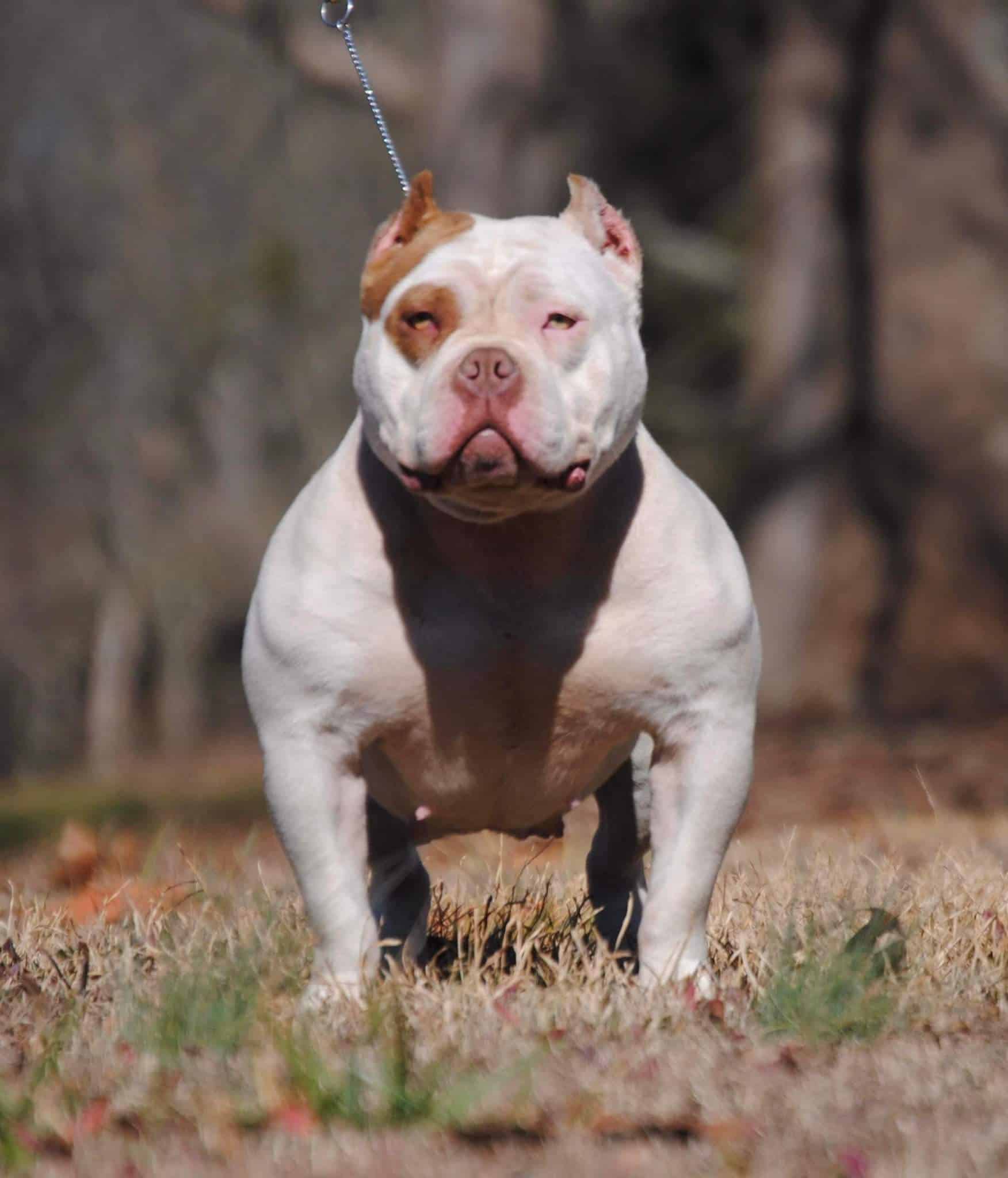 ICK Bullies | PAPO 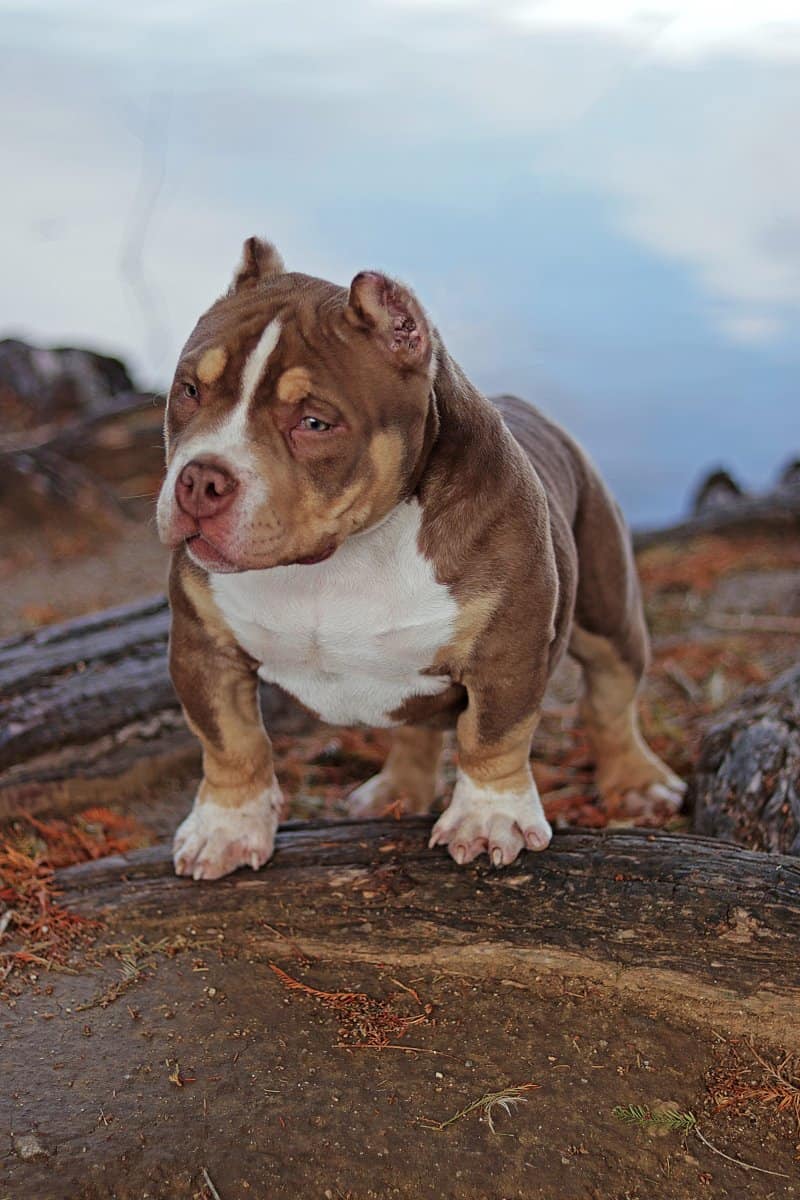 Latin Pits | MENACE  Short Muscle Bullys |
MICHELADA  Litin Pits | ||
ARIA  House Of Bullys | LOUIS V  Short Muscle | |
HONEY
DCB Bullys |
SNOWBALL
SNOWBALL, a clean structured, short , compact Micro with a big time pedigree
SNOWBALL, a clean structured, short , compact Micro with a big time pedigree
CAPCITY STUD SERVICE
We offer stud service to approved females. We offer in house breeding or semen shipping. All of our Bully’s are available for stud, we have a broad selection of the best bloodlines in the nation
For more information: call/text (614) 507-9702
STUD FEE: $ 1,500.00
SNOWBALL”s PEDIGREE
FRANK  Lifeliverbullyhouse | MR. BIG  Schoolem Bullycamp | PAINTBALL 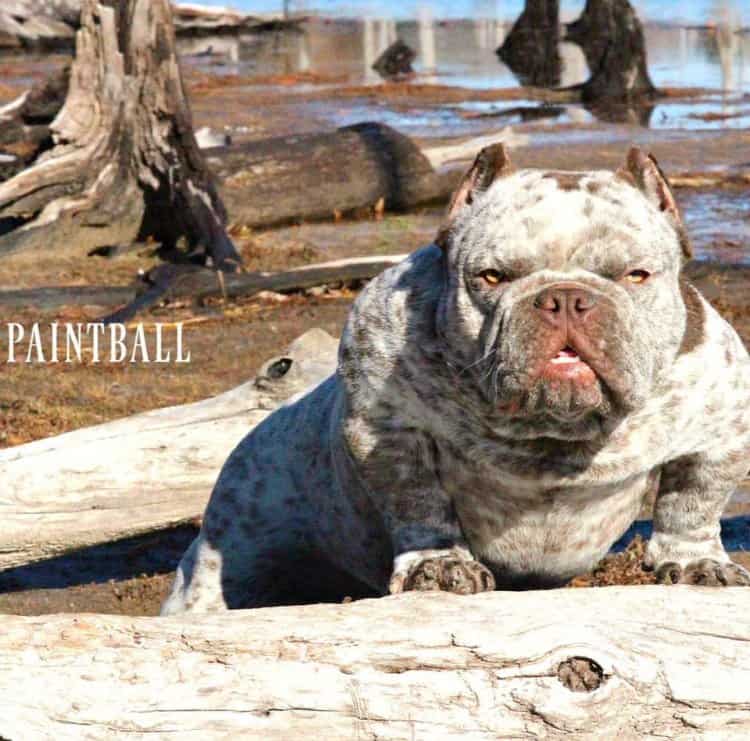 BTB |
TRI-FREE 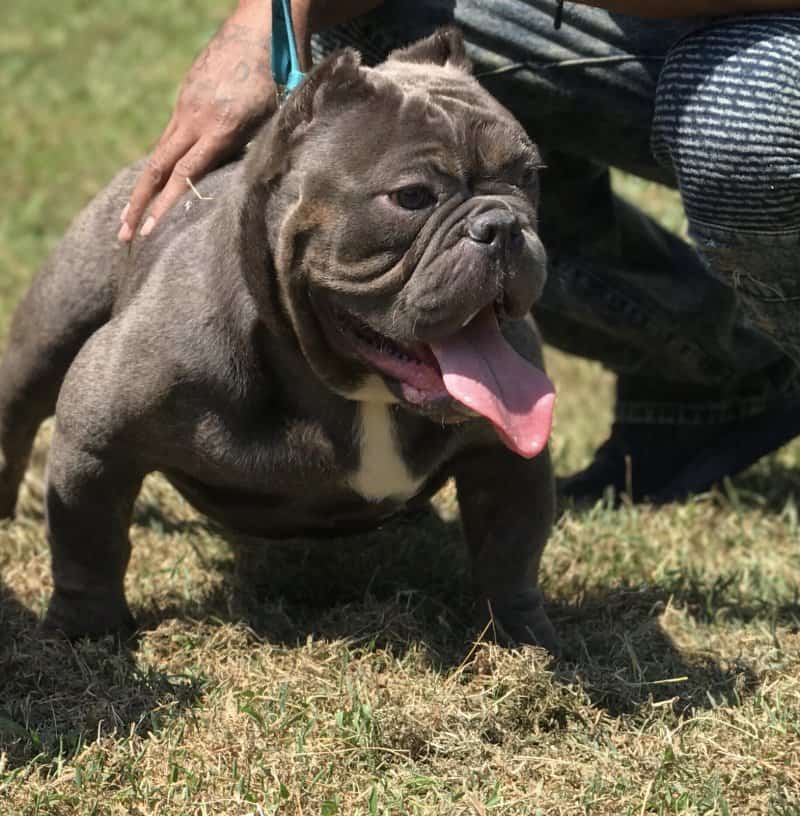 Schoolem Bullycamp | ||
ATHENA 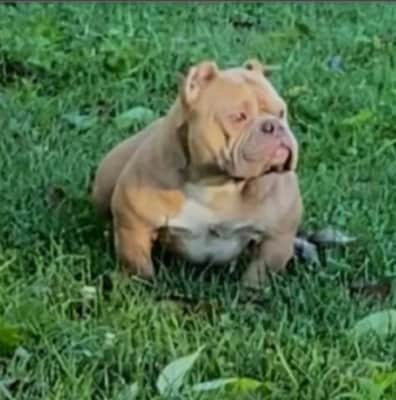 Lifeliverbullyhouse | RICH CHIGGA  Buckeye Bullys | |
BONNIE 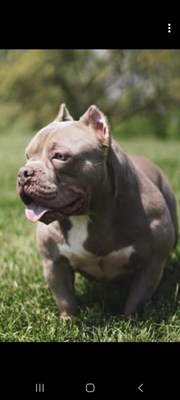 Lifeliverhouse | ||
RUNTZ  Lifeliverbullyhouse | MICHAEL  Time Bombs | PAINTBALL  Garden State Bullies |
PEEBLES 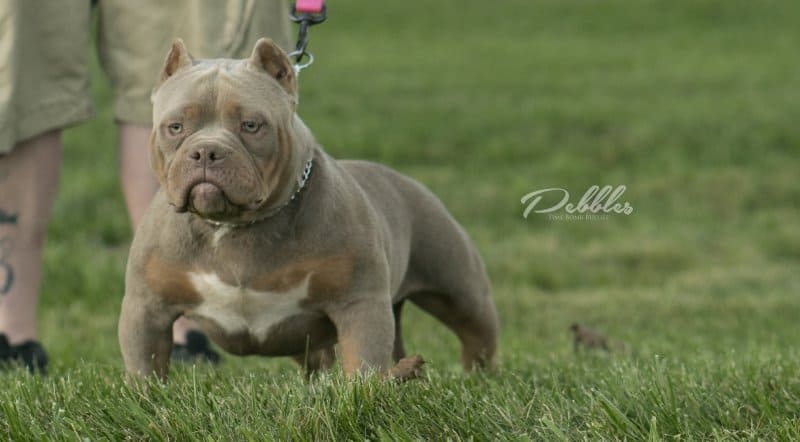 Time Bombs | ||
BONNIE  Lifeliverbullyhouse | BAM BAM 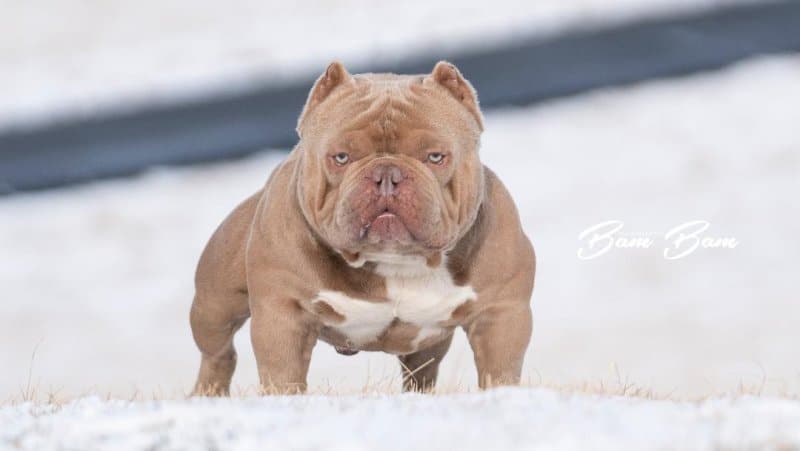 Time Bombs | |
CONFETTI
Time Bombs |
6 Grooming and Skin Care Tips for an American Bully
American Bully dogs have been gaining traction in the pet industry for the last decade. These beautiful, highly energetic, and fiercely loyal dogs are great choices for dog lovers and first-time dog owners.
On the surface, they look incredibly fierce. Plus, the name “American Bully” makes them sound terrifying. However, if you look past their bold, intimidating appearance, you’d be pleasantly surprised to learn that they’re among the gentlest and most affectionate dog breeds. They make perfect couch potatoes for snuggling and are excellent companions for long walks in the park.
Although these animals are incredibly low-maintenance, you need to learn how to properly care for them. Therefore, in this post, we’ll explore the origins and characteristics of this exotic dog breed and share nine grooming and skin care tips to keep them happy, healthy, and well-behaved.
About the American Bully Dog Breed
As the name suggests, the American Bully is an American dog breed that first appeared in the early 80s. Due to their appearance, they were initially thought to be a new type of pitbull. However, they’re two distinct breeds. However, American Bully dogs do come with pitbulls. They’re a cross between the American Staffordshire terrier and the American Pitbull terrier and different Bulldog breeds to be precise.
This explains their strong, fierce appearance and similar features, such as their thick bodies, high sets of ears, muscular build, and large heads. However, they have shorter legs, a wider body, and the personality of a Bulldog, which explains their calmness, playfulness, and cool temperament.
An Essential Guide to Proper American Bully Care
Here’s an essential guide on how to take care of an American Bully the right way
Food and Nutrition
Food is the most important aspect of any dog’s well-being. However, dog nutrition is based on several factors, including breed, lifestyle, health, size, and activity. American Bully dogs are incredibly muscular and energetic. Therefore, they need a high protein diet to maintain their muscle mass (30%) and a 70/30 ratio of carbs and fat to give them the energy boost they need.
You can consult a vet or an experienced bully breeder in Pennsylvania to learn about the best dog food brands, portion sizes, and mealtimes.
Water
American Bully Dogs spend a lot of time running and playing outdoors. Therefore, you need to ensure they’re hydrated throughout the day. Moreover, you to ensure you give them clean water to prevent health issues caused by bacteria, fungi, and other contaminants found in dirty water.
Cleanliness
Unlike their feline counterparts, dogs don’t clean themselves. Moreover, they tend to get dirty. American Bully dogs are no exception. However, the good news is that they’re short-hair so cleaning them is much easier compared to Labradors, German Shepherds, or Mastiffs. On the flip side, their fur is stiff to the touch meaning it can accommodate a lot of dirt and debris.
Therefore, you should wash your bully at least once every month using dog shampoo, which you can find at a local pet store or online. You also have to watch for signs of lice or fleas, such as rolling. Some Bully Dogs also like to graze their bodies against walls and rough structures which can damage their skin.
Exercise
American Bully Dogs tend to gain weight faster than other breeds due to their high protein and fat diet. Therefore, they require regular exercise to remain active and energetic. The best way to do this is by taking them for walks every day. If you enjoy jogging, you can have them run beside you.
You can also play fetch with them like any other dog or take them swimming with your friends or family.
Regular Vet Appointments
Like humans, dogs require regular visits to the doctor’s office (or vet’s office, in this case) for vaccinations, checkups, and treatments. Having a dedicated vet for your bully can improve its health. They can keep tabs on their nutrition and adjust diet plans according to their health conditions. Moreover, they can treat different injuries and health problems commonly associated with bullies, such as joint dysplasia’s, heart diseases, and skin allergies.
6 Grooming and Skin Care Tips for an American Bully
Proper grooming and skin care are just as important as any other aspect of caring for an American Bully. Although Bullies have short, stiff coats, they’re susceptible to different skin problems, such as eczema, ichthyosis, skin mites, and fungal infections, causing them to itch and scratch regularly. As a result, owners have to proceed with caution.
If you’re planning to adopt an American Bully or just got one recently, here are six grooming and skin care tips you can use to prevent any issues and keep your dog relaxed and happy throughout the process:
1. Regular Brushing Routine
Since American bullies have shorter coats, it’s easier to notice loose hairs and rough patches when you pet them. If you don’t brush them regularly, you’d find loose hairs on clothing, furniture, food, and anything your furry little friend comes in contact with.
Thus, a regular brushing routine is important as it minimizes shedding and improves skin. Ideally, you should brush your Bully at least once a week. This will reduce dirt, debris (pollen, food, etc.), dander, and lice buildup/growth. Regular brushing will also help your dog secrete natural protective oils to minimize itching and scratching.
2. Proper Nutrition and Hydration
Proper nutrition is the key to maintaining the good overall health of your Bully, not just its coat and skin. Therefore, you need to ensure it gets the right amount of macros, especially high-quality proteins. You should speak to your vet to recommend the best dog food products in the market in terms of minerals, vitamins, and meal types.
Secondly, you need to ensure your Bully is hydrated at all times as dehydration usually leads to dry and flaky skin, which leads to irritation and skin problems. So, make sure it has access to clean water in its vicinity.
3. Temperature Control
Like most dogs, American Bullies usually shed more often during the summer. Therefore, one smart way to reduce shedding is by keeping them cool throughout. Of course, this entails keeping them indoors for long periods in a temperature-controlled environment, which could limit their playtime and activities.
However, you can make up for this lost time by taking them outdoors during the cooler hours of the day, such as early mornings or after sunset.
4. Regular Vet Consultations for Skin Allergies
As mentioned above, American Bullies are highly susceptible to developing skin problems caused by food or environmental allergies. As a result, American Bullies experience hair loss and more shedding than usual. Therefore, you should proactively consult with your vet to determine your dog’s allergy’s root trigger.
This way, you can determine which animal proteins, carbs, or other macros to steer clear off. For instance, if your dog is allergic to chicken, you can opt for beef. Moreover, you can proactively stock your medicine cabinet with your dog’s allergy and skin medication for self-administration/application.
5. Stress and Anxiety Management
If you didn’t know, dogs are prone to excessive shedding when they’re stressed or anxious. The most common triggers include boredom, fear, and distress. For instance, they could start shedding excessively if you move into a new home or adopt another dog. Changing their daily routine by limiting their playtime or exercise due to school or work schedules could make them more anxious.
6. Proper Bathing Shampoo and Schedule
American Bullies don’t need to be bathed as often as long-haired breeds. Too much bathing could have a reverse effect on their skin and coat health as it removes the natural moisturizing oils from their skins, promoting dryness, dander, and itching. Therefore, you should only bathe Bullies once every month during summers and after 2-3 months during the cooler months.
Secondly, improper shampoo can also lead to shedding and skin issues. Many Bullies have sensitive skin and allergies. Therefore, they require hypoallergenic shampoos. So, speak to your vet to find the best-suited shampoo for your dog.
Conclusion
So, there you have it – 6 grooming and skin care tips for an American Bully. Every aspiring or seasoned bully owner can use these tried-and-tested recommendations to ensure proper care. This exotic, muscular dog breed requires more attention and proactive care than many dog breeds in terms of nutrition, exercise, temperament training, cleanliness, and vet appointments. Therefore, you need to do your homework before you adopt one.
Finally, if you want to get some more information on our new Capcity Bully puppies, adults for sale, latest blogs, and breedings – scroll down to the bottom of the page and fill out the email alerts box!
OUR FRIENDS:
FREE WORKSHOP!!! TRAIN YOUR BULLY TO HAVE THE OBEDIENCE OF A SERVICE DOG ( PUPPY & ADULT ) by K9 TRAINING INSTITUTE
CLICK HERE FOR FREE WORKSHOP
5 THINGS YOU SHOULD KNOW ABOUT THE AMERICAN BULLY
An American Bully, despite its name, is not a bully at all. If you’re a frequent visitor to dog parks, you might have seen a big-headed goofball of a dog attempting to shake people’s hands with its paw. Often mistaken for a pit bull, people are generally wary of this breed, but once they get to know one, they understand that an American Bully is nothing but a huge bundle of love!
A List of Things You Must Know Before Getting an American Bully
If you’re considering getting this bully breed for yourself and your family, you should read up as much as possible before making the final decision to bring one home. We have compiled a list of questions and answers to give you a general idea about this tough-looking gentle fellow.
1. Is The American Bully A Pit Bull?
Short answer: No!
People often think of American Bully as a pit bull, but in actuality, these two breeds are very different from each other. Guaranteed, the American bully has been created using pit bull as the breed base, but it is not a pit bull. Compared to a pit bull, an American Bully has a bigger head, smaller legs, and a stockier build.
A relatively new breed brought into existence about 30 to 35 years ago, American Bullies are often stigmatized for resembling pit bulls. In truth, this breed has a soft and calm personality and is friendly, beautiful, and very sweet. They have been bred using various breeds, including the Staffordshire Bull Terrier and French and English Bulldogs.
2. Is an American Bully Compatible with Large Families?
The loving nature of an American Bully makes this breed a perfect companion for small and large families. They are gentle and playful around babies and toddlers, and are, therefore, the perfect play partners. Introducing them to a new member of the family is not a hassle.
They love to curl up next to their family members and put their heads on people’s laps, the sign of a perfect lapdog. This breed oozes love! Their owners are blessed with loads of licks and kisses throughout the day, and in return, they only demand love and affection. Their loyalty to their family makes them amazing family pets, equally loved by all.
3. What Are the Known Health Issues Among American Bullies?
The American Bully is a healthy dog breed. Unlike some dogs who are prone to illnesses, the problems faced by this breed are usually genetic.
Even though the specific health issues faced by the American Bully are not fully established, owing to the breed being relatively new, we have created a list of the most commonly occurring health issues faced by them:
Hip Dysplasia: This causes the dog pain and makes it hard for them to walk on one or both rear legs.
Cherry Eye: Protruding gland under the third eyelid. Your vet will remove the cherry-like object from your dog’s eye.
Elbow Dysplasia: Difference in bone growth rates makes this a common occurrence in large dogs. It requires surgical treatment.
In addition, these dogs are at risk of suffering from a nervous system disorder, neuronal ceroid lipofuscinosis, which causes swelling and some changes in the retinal cells. Other less occurring diseases could be entropion, kidney or thyroid conditions, or bone cancer. Please note that large dogs usually suffer from the same diseases; hence these have been added to the list. It does not mean the pup you get will have any of these for sure.
Some dogs genetically inherit one or more of these diseases, and that’s why it is easier to track and treat them. If you buy your bully from a breeder with a good reputation, you do not risk getting an ill dog, and your new pet will have fewer chances of suffering from a health condition.
4. How Difficult Is It to Train an American Bully?
American Bullies are smart dogs. They easily pick up commands and understand what is required of them. Training this breed is not hard and requires positive reinforcement, treat-motivations, and frequent rewards, such as praises and belly rubs. Like other breeds, training should start at a young age, so the pup grows up to be an obedient and well-mannered dog. Training also helps stimulate their minds and develops a strong bond between the pup and the trainer.
In the first few weeks of your puppy’s arrival, they should get a lot of cuddles, exercise, and playtime to gain stamina and grow into a strong and healthy dog. Formal training can wait till the puppy is 4 months old.
A brief training session works better than long strenuous sessions. Five-to-10-minute stretches at a time are a good starting point for a pup. This breed is eager to please, so training them is not a difficult task. Make sure your dog feels loved and a part of your family at all times.
5. What is Their Personality Like?
American Bullies are one of the gentlest, most affectionate, and loving breeds. Unable to process their large size and heavyweight, they consider themselves lap dogs and are great playmates for kids.
An American bully is fiercely loyal and very protective of its owners. They’ve been known to show a little uncertainty around unknown people.
In addition, they are very attentive, alert, confident, and a perfect breed for training. In the absence of an alpha owner or a pack leader, they tend to establish their dominance and may cause trouble with training and boundaries. Let the dog know you’re in charge and keep them occupied so they don’t get bored.
Conclusion
Getting an American Bully for your family is one of the best and most rewarding decisions you may make! These dogs take a little time to get accustomed to new people, experiences, and animals and make extremely loving pets, but it’s all worth it when you consider how much love they have to offer.
With the option to go out, stretch their legs, and play, they require a constant outlet to release energy. An American Bully will fare equally well in big and small houses and apartments with ample time to play outside. In cold or wet weather, you can substitute visits to a dog park and walks around the block with a jog on a treadmill.
Finally, if you want to get some more information on our new Capcity Bully puppies, adults for sale, latest blogs, and breedings – scroll down to the bottom of the page and fill out the email alerts box!
OUR FRIENDS:
THE AMERICAN BULLY 101

THE AMERICAN BULLY 101
The American Bully is a recently developed breed of dog which was bred to be a companion dog and show version of the American Pit Bull Terrier and the American Stafford Terrier. First appearing in the 1990’s, the American Bully is rapidly increasing in popularity, more so than almost any other rare bred both in the United States and abroad. The American Bully is best known for its tough and intimidating appearance and its friendly but protective nature. American Bullies are not currently recognized by any major canine organization but a few smaller registries have recognized them and there are several breed specific clubs dedicated specifically to them. The American Bully is usually considered to be a type of Pit Bull, referring to the general type collectively known as Bully Breeds, not the specific breed.
HISTORY
Until the 1990’s, the American Bully did not exist at all. Its ancestors, however, have been very well known in the United States for almost two hundred years. For many centuries, blood sports were immensely popular in England. Two of the most popular were bull-baiting, where an Old English Bulldog was pitted in combat against a chained bull, and rat killing, where a Terrier-type dog would be placed in a pit with dozens of rats until either a certain amount of time had passed or all the rats were dead. By 1835, social attitudes had changed and bull-baiting was made illegal. Dog fighting was not banned, however, and this sport became immensely popular. The preferred dogs used in dog fighting were crosses between Old English Billdogs and Rat Killing Terriers, a mix known as the Bull and Terrier. Eventually, Bull and Terriers bred true, becoming two new breeds, the Staffordshire Bull Terrier and the Bull Terrier. Staffordshire Bull Terriers were imported into the United States beginning in the early 1800’s and these dogs became incredibly popular across the country. In America, these dogs became known as American Pit Bull Terriers after the fighting pits in which they battled.
American Pit Bull Terriers were not only tasked with dog fighting in the United States, they also served as hog hunting dogs, vermin eradicators, and catch-dogs. Perhaps most importantly, after a day of fighting or work, these dogs came home to be much beloved family pets. The breed developed a unique set of physical and temperament characteristics as a result. On the one hand, the breed was very driven to work, eager to please, incredibly pain tolerant, absurdly determined, single-minded, very dog aggressive, and willing to fight to the death. On the other hand, the American Pit Bull Terrierwas intensely loyal, devoted, playful, energetic, extremely affectionate, one of the most human bite inhibited of all breeds, and very tolerant and fond of children. In addition to the many thousands of registered American Pit Bull Terriers, countless more were unregistered, and this breed was undoubtedly among the country’s most popular by the end of the 1800’s. In the 1930’s, the American Kennel Club (AKC) began registering American Pit Bull Terriers as American Staffordshire Terriers, although different breeding policies have led to most (but far from all) Pit Bull Fanciers to consider the American Staffordshire Terrier and American Pit Bull Terrier as separate breeds. Unfortunately, many thousands of Pit Bulls continued to be bred for dog fighting in addition to hunting and other jobs. In the 1980’s, the American Pit Bull Terrier began to be seen as the ultimate “tough guy” dog. As a result, many irresponsible owners and breeders trained or developed aggressive Pit Bulls while at the same time the breed’s popularity absolutely exploded. Several widely publicized serious dog attacks took place and the breed earned the most negative reputation of all dogs. Since that time, a constant battle has been waged by Pit Bull fanciers and detractors, which has often involved legal restrictions being placed on Pit Bull ownership or the breed(s) being banned outright. This is only those parts of the history of the American Pit Bull Terrier and American Staffordshire Terrier that most impact that of the American Bully, for more information on those breeds please see the article on The Bully Breeds, a term used to describe a group of breeds often also called Pit Bulls.
In the 1990’s, a number of breeders around the country sought to develop a breed of dog from the American Pit Bull Terrier and American Staffordshire Terrier that was strictly a companion animal and show dog. This was done for several major reasons. The work drive of the American Pit Bull Terrier is so high that the breed often exhibits behaviors such as very high energy and curiosity that cause problems for a pet. Also, Pit Bulls often exhibit such extreme dog aggression that they cannot be trusted around other dogs. Although the vast majority of Pit Bulls exhibit very low levels of human aggression, a few lines and irresponsible ownership had caused that to be a concern as well. It is unclear whether or not the initial goal was to develop an entirely new breed or just to alter the temperaments of existing dogs, but a new breed was the result either way. The American Bully was unusual for a new breed in that it was not developed primarily by one person or one breeding program, but rather dozens and perhaps hundreds of breeders across the United States, many of whom were working alone with almost no contact with other breeders. Early breeding efforts primarily (but not exclusively) centered on Virginia and Southern California, but quickly spread across the country. It is unclear exactly when the American Bully was first considered a separate breed or when that name first appeared. The breed was well-known to bully breed fanciers by the early 21st Century, and has become increasingly popular and recognized in the last five or six years.
American Bully breeders primarily used American Pit Bull Terriers and American Staffordshire Terriers, and many used these breeds exclusively. Although it has apparently never been openly admitted, it is almost universally agreed that other breeds were used as well. The Staffordshire Bull Terrier, the English equivalent of American Bully Breeds, was almost certainly used, especially to develop the smaller sizes of American Bully. The English Bulldog was also almost definitely used, and some have speculated that is was used very heavily. This breed would have provided a calmer, less aggressive temperament, as well as a tough, bulky body and massive head. American Bulldogs are also widely thought to have played a significant role, and other breeds which have been suggested include the Bullmastiff, Bull Terrier, Rottweiler, and mixed breed dogs.
Because so many breeders worked to develop the American Bully, most without a clear standard or goal in mind, the American Bully became quite variable in appearance. The breed can be significantly smaller than a true American Pit Bull Terrier, but it can also be several times larger. The dog also comes in a wide variety of coat colors and patterns. Body shape, type, and proportions are also more variable than in most modern pure bred dogs, although this breed is generally very thickly built, quite stocky, and absurdly muscular. Head shape and type seem to be considerably more uniform, but are still somewhat variable. In many ways the American Bully is very similar to the breeds from which it is descended, and the casual observer would probably mistake one of these dogs for an American Pit Bull Terrier. However, experienced Pit Bull fanciers would never confuse most American Bullies for a pure bred American Pit Bull Terrier and the breed definitely has a distinctive appearance and look.
Much like the Pit Bulls from which they are descended, American Bullies have a number of registries which were developed specifically for them in addition to being recognized by several small multiple breed registries. The American Bully is currently recognized by the American Bully Kennel Club (ABKC), United Bully Kennel Club (UBKC), Bully Breed Kennel Club (BBKC), and the United Canine Association (UCA). Due to the popularity of American culture overseas, especially the hip hop and urban culture in which Pit Bulls play a major role, American Pit Bull Terriers have been growing rapidly in popularity around the world, even though they face bans in many countries. The American Bully has piggy backed on this popularity, and is now found in a number of European countries. The European Bully Kennel Club (EBKC) was founded to promote and protect the breed internationally, and currently has offices in Malta, France, Switzerland, Holland, Germany, Belgium, and Italy.
In recent years, the American Pit Bull Terrier and a few other breeds have come under increasing legal pressure. Many municipalities and counties in the United States have placed substantial restrictions on their ownership, and many others have outright banned their ownership altogether. Some entire states are currently considering banning Pit Bulls, a process already completed in several entire countries around the world, especially in Europe, Asia, and Oceania. Known as Breed Specific Laws (BSL) such bans are extremely controversial and have usually been shown to be ineffective at reducing dog bite incidents. There is also a great deal of confusion surrounding which breeds are banned by the term Pit Bull. In the United States, Pit Bull bans usually include American Pit Bull Terriers, American Staffordshire Terriers, Staffordshire Bull Terriers, and any dogs meeting their standards. In Europe, American Pit Bull Terriers are usually banned but not American Staffordshire Terriers or Staffordshire Bull Terriers. This has created an immense confusion as the three breeds are so similar that they are easily mistaken for each other, and many of the same dogs are registered as both American Pit Bull Terriers and American Staffordshire Terriers. It is entirely unclear whether the American Bully would be subject to most such bans. Most American Bullies have pedigrees showing that they are not a specifically banned breed. Additionally, most individual American Bullies do no closely meet standards of another breed. However, depending on the wording of the individual ban, American Bullies may be subject and legal advice may be required.
The development of the American Bully has been met with mixed reactions from the general bully breed community. Most breeders of American Pit Bull Terriers consider the American Bully to be inferior to their breed due to its appearance and lack of working ability, opinions shared by much of the American Staffordshire community as well although generally less strongly. However, it appears that a sizable majority of the fanciers these dogs do not object to the American Bully as a distinct breed, in and of itself, but rather it being classified as a Pit Bull. American Bullies do not closely match the standards of other Bully breeds, nor do they possess anywhere near the working drive or ability. Fanciers of other bully breeds feel that associating the American Bully with their breeds is unfair to both animals. American Pit Bull Terrier breeders are most concerned that some careless and inexperienced breeders have crossed American Bullies with their breed and passed the offspring off as pure American Pit Bull Terriers (occasionally pure bred American Bullies have also been advertised as American Pit Bull Terriers as well), which they feel has seriously compromised the integrity of the older breed. If such practices were stopped, the American Bully would probably be welcomed warmly just as other newly developed Bully breeds have been in the past. However, many fanciers of other bully breeds now derogatively refer to any bully-type dog that does not match their standards or is thought to be a mix as an American Bully. Many dogs are now considered to be American Bullies which may have no real relation to the breed, a situation that continues to cause confusion.
American Bullies are still a very new breed, and have not yet experienced wide recognition. However, they can be found in surprisingly large numbers across the United States. This breed not only has a sizable registered population, but a population of unregistered dogs that is likely significantly higher. Although it does not appear that any population studies have been conducted on the American Bully, it is very likely that there are already far more American Bullies alive in the United States than many breeds which have achieved full recognition with the United and American Kennel Clubs. The breed’s population is also growing rapidly overseas, primarily in Europe. The American Bully was bred primarily as a companion animal and show dog, and that is where the breed’s immediate future almost certainly lies. However, the breed retains the ability to perform a number of tasks and the American Bully has been used for personal an property protection, law enforcement, therapy, obedience, agility, and dog sports.
APPERANCE
The American Bully is similar in appearance to its ancestors the American Pit Bull Terrier and American Staffordshire Terrier, but is usually considerably bulkier, squarer-headed, shorter muzzled, and muscular than those breeds, as well as exhibiting greater variation in size. American Bullies range widely in size, with some registries recognizing four different size varieties, the Standard, Classic, Pocket, and Extra Large. Standard American Bully males stand between 17 and 19 inches tall at the shoulder while females usually stand between 16 and 18. Classic males stand between 18 and 19 inches tall at the shoulder while females stand between 17 and 18. Pocket males stand less than 17 inches tall at the shoulder, and females stand under 16. Extra Large males stand over 20 inches, and females of that variety stand over 19 inches. The weight of an American Bully is completely dependent on its height and builds and can range from 30 to 150 pounds.
In general, this breed is extraordinarily heavy for its size, and many American Bullies in good condition weigh more than double what an average dog of the same height would. This weight is not bulk, far from it. Most of it is pure muscle, and this breed is almost certainly the most muscular of any dog. American Bullies are built like professional body builders. Most breed members have relatively short legs and are often significantly longer than they are tall. The tail of this breed is identical to that of other bully breeds, long, thin, and held outwards with a slight curve. Some of these dogs may have their tails docked but that is not especially common.
The head and face of the American Bully look like the halfway point between that of the American Bulldog and the American Pit Bull Terrier. The head is generally of medium length but immense width, and is usually very square and flattened. The muzzle is usually significantly shorter than the skull, but in no way is it brachycephalic (pushed in). The muzzle is generally quite wide and usually ends quite abruptly, although it may either be square or rounded depending on the dog. The head and muzzle are quite distinct from each other and connect abruptly. This breed should have a scissors bite and lips that are close fitting but not necessarily tight. Although not excessively wrinkly, many of these dogs do have noticeably wrinkles on their faces, especially larger individuals. The ears of the American Bully naturally fold down close to the sides of the head, but many owners choose to prick their dogs to an erect triangle. The eyes of this breed should be medium to small in size, set relatively deeply, and be round or slightly oval in shape. Their color is determined by the coat of the dog but they usually give off a very intense, protective expression.
The American Bully has a short, tight-fitting coat that is stiff to the touch and has a noticeable shine. This breed is found in every color and pattern found in domestic dogs, and is so variable that none seem to predominate. Some registries exclude merle dogs, but this is far from universal and in such dogs are identical to other American Bullies in all other respects
TEMPERAMENT
The American Bully was developed as a companion dog from breeds that are widely recognized as being among the most human oriented of all dogs. This breed is known for being extremely affectionate, often fawningly so. Although American Bullies have a tough exterior, most of them are complete softies with their families, always eager to snuggle and lay on a lap. Definitely not a one-person dog, breed members have a tendency to form very close bonds with all members of family. This breed has among the best reputations of any dog with children. American Bullies are incredibly pain tolerant and can handle virtually any amount of rough housing with a waging tail of rolling tongue. This breed is also very bite inhibited and unlikely to snap. Many of these dogs are to be acutely aware that children provide endless amounts of playtime and affection and become their best friend. As is the case with any breed, proper socialization with children is required to achieve the desired temperament.
American Bullies are generally accepting and tolerant of strangers. Human aggression has been seen as highly undesirable in the breeding of both the American Bully and its immediate ancestors for almost two hundred years. With proper training and socialization, this breed will usually be very polite and friendly. Although some dogs are considerably more suspicious, more are openly excited to meet new people and consider everyone a potential friend. Training is a necessity as even though this breed is rarely aggressive, it is so immensely powerful and determined that even the slightest aggression can be a serious problem. American Bullies do tend to be naturally protective, but in calm way that is more similar to an English Bulldog or Mastiff than a Rottweiler or American Bulldog. This breed can make a tolerable watch dog, but some are more alert than others. American Bullies have been trained as personal protection animals with great success, but this breed is probably not aggressive enough to make a good guard dog (although its appearance alone would likely intimidate wrong doers). This only applies to property not family or friends, and an American Bully would absolutely not tolerate physical harm coming to someone it cared for. When it deems necessary, an American Bully is absolutely fearless no matter the opponent, and one of these dogs defending its family would not be a dog to mess with.
Despite the best efforts of breeders, American Bullies have significantly more issues with other animals than humans. It has long been a goal of American Bully breeders to substantially reduce the dog aggression found in other breeds. In many ways they have been successful, and most American Bullies are considerably more tolerant of other dogs than either the American Pit Bull Terrier or American Staffordshire Terrier. However, many of these dogs are still quite dog aggressive, especially unneutered males, and exhibit all forms of dog aggression including territorial, possessiveness, same-sex aggression, dominance, and prey-driven. Training and socialization will substantially reduce issues, but they will not necessarily eliminate them. Even the least dog aggressive American Bullies are probably not going to back down from a fight that comes their way, which will almost always be disastrous for the other dog. Breeders have also worked to eliminate the prey drive of the American Bully, and this dog will generally tolerate non-canine animals after it has been socialized with them. Some individual American Bullies may be significantly more prey driven, and any dog that has not been exposed to other animals will probably pursue and potentially attack them.
Although the American Bully was bred to be a companion dog, trainability and intelligence remained very important in its development. This breed tends to be both highly intelligent and very eager to please, and many are capable of learning great amounts. American Bullies have successfully competed at a number of different dog sports, and are considered quite versatile. This may not be the easiest breed for all owners. Although American Bullies are not usually a breed that will constantly challenge for authority, they will generally not obey any command blindly. Owners must maintain a position of dominance at all times, and this breed is probably not ideally suited to a novice dog owner. Additionally, some of these dogs have a tendency to be extremely stubborn. Many believe that a Pit Bull type dog cannot be trained without physical force, but this is very far from the truth. These dogs actually respond far better to rewards based training methods, and many American Bullies will do anything for a treat. Because of a negative public perception of all Pit Bull type dogs, it is of the utmost importance for American Bully owners to have their dogs extraordinarily well-trained to avoid potential personal, financial, and legal difficulties.
Perhaps the biggest difference between American Bullies and their relatives regards energy level and work drive. Whereas most Pit Bulls are always ready and eager to go, American Bullies are considerably more relaxed and calm. This certainly does not mean that an American Bully is a couch potato, and this breed probably needs more exercise and activity than most common companion breeds, at least 45 minutes to an hour every day. It does mean that the average committed family will be able to provide the exercise that an American Bully needs without too much difficulty and that a properly exercised breed member will be relatively calm indoors. This exercise is necessary, because otherwise most breed members will develop behavioral problems such as destructiveness, excessive barking, hyperactivity, and over-excitability. American Bullies are generally willing to perform whatever task is presented them and make good working dogs, but they are not constantly driven to do so. Whereas an American Pit Bull Terrier may drop a ball in your lap every few seconds, an American Bully would probably only do so for a short while.
Finally, if you want to get some more information on our new Capcity Bully puppies, adults for sale, latest blogs, and breedings – scroll down to the bottom of the page and fill out the email alerts box!
FREE WORKSHOP!!! TRAIN YOUR BULLY TO HAVE THE OBEDIENCE OF A SERVICE DOG ( PUPPY & ADULT ) by K9 TRAINING INSTITUTE
CLICK HERE FOR FREE WORKSHOP
AMERICAN BULLY MERCHANDISE
WE DID THE WORK! OUR RECOMENDED BULLY PRODUCTS CAN BE FOUND AT THE BULLY MERCHANDISE STORE
PREVENTION AND VACCINATION OF PUPS

PREVENTION AND VACCINATION OF PUPS
Newborns have a fragile and weak immune system during their first weeks. Their only defence comes from the colostrum delivered by the mom during the first hours after delivery.
Following an established disease-preventing course and schedule, tailored by your vet, will drastically increase your puppy’s chances to stay healthy during its first weeks.
DEWORMING
First parasites to eliminate: worms. They are actually not a huge threat, they do not want to kill, they simply want to use the puppy as a dinner plate.
Thriving in the dog’s intestines, the most common are the hookworms, roundworms, tapeworms and whipworms.
The American Association of Veterinary Parasitologists recommends the regular deworming of each puppy following a particular schedule, see the chart across, suitable for Panacur, the best wormer for dogs and cats, against all the above mentioned worms.
You can also give Panacur to the pregnant bitch few days before she gives birth: exact dosage on the very same chart
